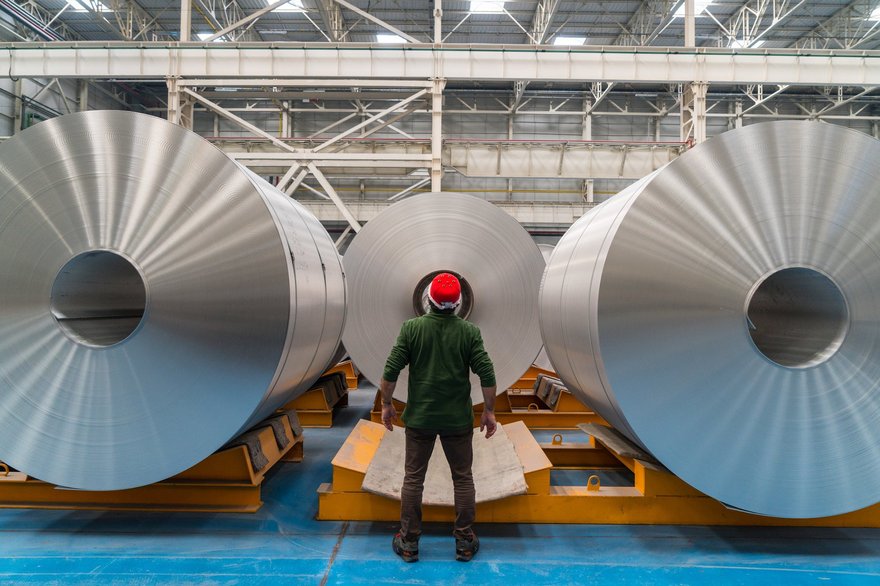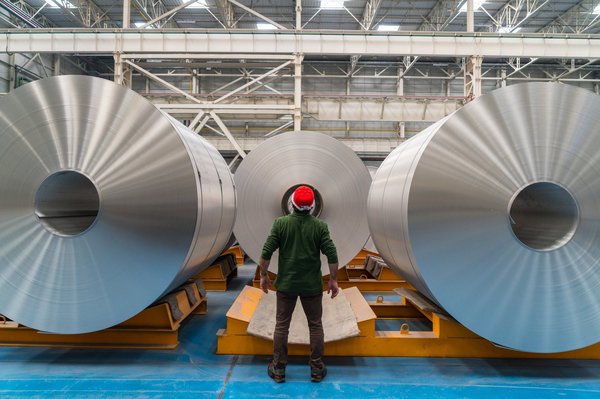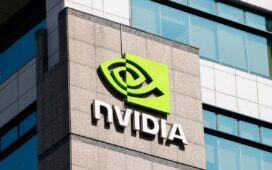Commodity exchange-traded funds (ETFs) provide exposure to metals, energy, and agricultural products without the hassle of direct ownership. While gold and silver can be stored, commodities like oil, natural gas, and wheat are harder to hold—making commodity ETFs a practical solution.
These ETFs offer diversification thanks to their low correlation with stocks and bonds, like some popular index funds, and can hedge against inflation, as commodities often rise in value when prices increase. However, they’re also fairly volatile, influenced by supply and demand, geopolitical events, and economic conditions.
With popular options tracking gold, crude oil, and natural gas, commodity ETFs make it easy to invest in this dynamic asset class. Here’s what you need to know.

Image source: Getty Images.
Commodities ETFs to invest in 2025
4 commodities ETFs to invest in 2025
When investing in commodity ETFs, it’s important to choose funds that offer broad diversification across multiple sectors like metals, energy, and agriculture while keeping costs low.
For this list, we screened for ETFs that provide exposure to a wide range of commodities rather than focusing on a single asset like gold or oil.
We also prioritized funds that don’t require a K-1 tax form, which is commonly issued by partnership-structured ETFs. K-1s can complicate tax filings and cause delays compared to standard 1099 forms, making them less convenient for individual investors.
Commodities are undifferentiated products. They are distinct from branded products like cars, watches, or smartphones, which are generally identified by the company that makes them.
Invesco Optimum Yield Diversified Commodity Strategy No K-1 ETF (PDBC)
Invesco Optimum Yield Diversified Commodity Strategy No K-1 ETF (PDBC)
The Invesco Optimum Yield Diversified Commodity Strategy No K-1 ETF (PDBC -2.28%) tracks the DBIQ Optimum Yield Diversified Commodity Index Excess Return, providing exposure to 14 heavily traded commodities across energy, precious metals, industrial metals, and agriculture. The fund includes gasoline, Brent crude, NY harbor ULSD, WTI crude oil, natural gas, gold, corn, soybeans, wheat, sugar, zinc, aluminum, copper, and silver futures.
What sets this Invesco ETF apart is its optimum yield strategy, which helps manage roll yield — the impact of replacing expiring futures contracts with new ones. By selecting contracts with the best price curve positioning, the fund aims to reduce the negative effects of contango, where later-dated futures contracts are more expensive than near-term ones, eroding returns over time.
With an expense ratio of 0.59%, the fund is fairly affordable for a commodity ETF. However, it’s not the most tax-efficient choice, since it tends to pay large capital gains distributions in December that can lead to unexpected tax liabilities for investors in taxable accounts.
Direxion Auspice Broad Commodity Strategy ETF (COM)
Direxion Auspice Broad Commodity Strategy ETF (COM)
Commodities are known for their volatility, with prices often making sharp moves up or down and staying there for extended periods. This makes commodity markets highly cyclical, where long periods of growth can be followed by sudden downturns, creating challenges for buy-and-hold investors.
The Direxion Auspice Broad Commodity Strategy ETF (COM -0.72%) is designed to manage this volatility by tracking 12 key commodities across agriculture, energy, and metals. The fund holds corn, cotton, soybeans, sugar, wheat, crude light, heating oil, natural gas, RBOB gasoline, gold, copper, silver.
What makes this Direxion fund different from most commodity ETFs is that it’s not restricted to a long-only strategy. If the trend turn unfavorable, the fund can go flat by holding Treasury bills instead of staying invested in declining commodity futures. This dynamic approach aims to improve risk-adjusted returns by reducing drawdowns during commodity downturns.
With a 0.70% expense ratio, this ETF is slightly more expensive than some peers, but its strategy has delivered strong performance, with a 10.81% annualized return over the past five years.
Teucrium Agricultural Strategy No K-1 ETF (TILL)
Teucrium Agricultural Strategy No K-1 ETF (TILL)
Commodities can generally be divided into four main categories: precious metals (gold, silver, platinum), energy (crude oil, natural gas, gasoline), base metals (copper, aluminum, zinc), and agricultural commodities (corn, wheat, soybeans, sugar).
For investors looking to focus on agriculture, the Teucrium Agricultural Strategy No K-1 ETF (TILL -0.64%) provides broad exposure to crop-based commodities. The fund takes a long-only approach with equal-weighted positions in corn, wheat, soybeans, and sugar futures, rebalancing monthly with one contract per market.
Unlike metals and energy, which are driven by industrial demand and macroeconomic trends, agricultural commodity prices are influenced by weather patterns, crop yields, supply chain disruptions, and government policies on trade and subsidies. These factors create a different kind of volatility compared to other commodities.
This agricultural ETF has a 0.97% expense ratio and, like many commodity funds, makes annual distributions in December, which investors should consider for tax planning.
abrdn Physical Precious Metals Basket Shares ETF (GLTR)
abrdn Physical Precious Metals Basket Shares ETF (GLTR)
The abrdn Physical Precious Metals Basket Shares ETF (GLTR 0.76%) is the only non-futures-based commodity ETF on this list. It physically holds gold, silver, platinum, and palladium bullion rather than using derivative contracts.
While gold and silver are well-known for their use in jewelry and investment, platinum and palladium have key roles in industrial applications, particularly in automotive catalytic converters, electronics, and even medical equipment.
This ETF’s holdings are stored in London, with vault inspections conducted twice per year by Inspectorate International. The metals are allocated, meaning each bar is specifically assigned to the fund, and they meet the strict Good Delivery standards set by the London Platinum and Palladium Market (LPPM) and the London Bullion Market Association (LBMA), ensuring their authenticity and quality.
With a 0.60% expense ratio, this fund is a cost-effective way to gain diversified exposure to precious metals. It also has no distributions, making it more tax-efficient than commodity ETFs that pay out gains annually.
Related investing topics
Should I invest?
Should I invest in commodities ETFs?
Commodity ETFs can be valuable portfolio tools, but whether they’re right for you depends on your investment approach. There are two primary ways to use them.
The first is as a trading tool — actively speculating on commodity price movements. This requires daily monitoring and a strong understanding of commodity cycles, as prices can be highly volatile. Traders often use leveraged or futures-based ETFs to capture short-term price swings, but these require careful risk management.
The second is for diversification — allocating around 20% of a portfolio to commodities and rebalancing periodically. Since commodities have a low correlation to stocks and bonds, they can help stabilize a portfolio, especially during inflationary periods or market downturns. In 2022, for example, commodities rallied while both stocks and bonds declined, making them an effective hedge.
However, commodities can also experience steep losses when trends reverse, such as the collapse in oil prices during the COVID-19 pandemic. Additionally, many of these ETFs rely on futures contracts, which can lead to large end-of-year capital gains distributions, creating tax inefficiencies for investors in taxable accounts.
For those who understand the risks, tax implications, and market drivers, commodity ETFs can be a powerful tool — but they require careful consideration before adding them to a portfolio.
FAQs
Commodities ETFs FAQs
How do commodity ETFs work?
Commodity ETFs gain exposure to raw materials either through futures contracts (which track the price of commodities over time) or by holding physical bullion, as seen in gold- and silver-backed ETFs.
How effective are ETFs?
ETFs are highly effective at providing broad, diversified exposure to various asset classes, including commodities, without the need to directly trade futures or store physical assets.
Do commodity ETFs pay dividends?
Some commodity ETFs pay end-of-year distributions based on realized capital gains from futures contracts, but bullion-backed ETFs generally do not pay dividends since they hold physical metals rather than income-generating assets.
Does Vanguard have a commodity ETF?
Vanguard does not offer a commodity ETF, but it does have a commodity mutual fund, the Vanguard Commodity Strategy Fund Admiral Shares (NASDAQMUTFUND:VCMDX).





